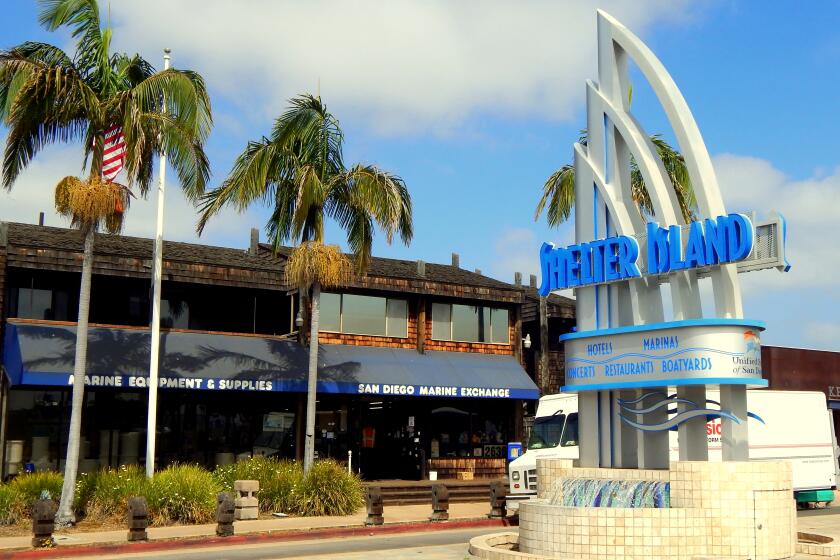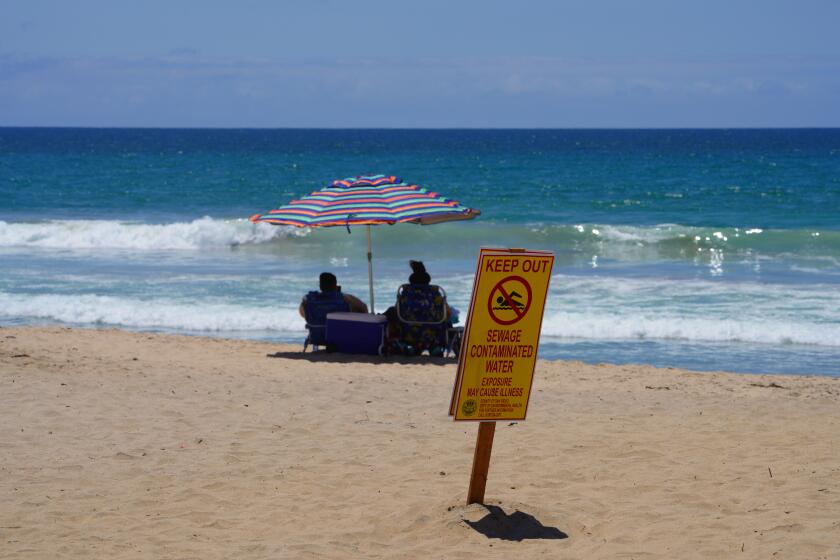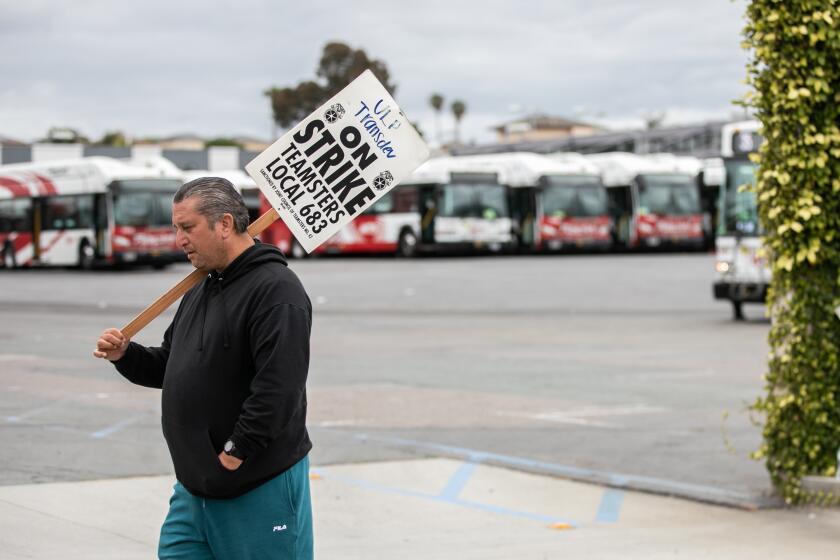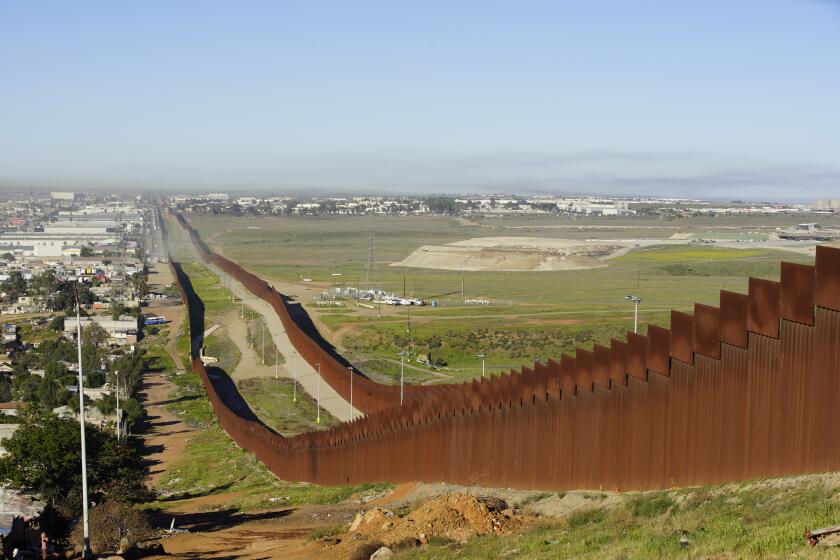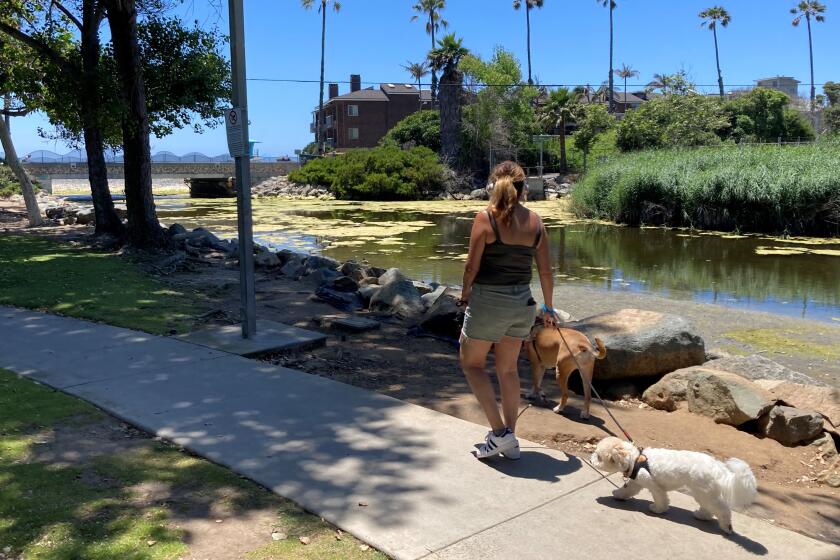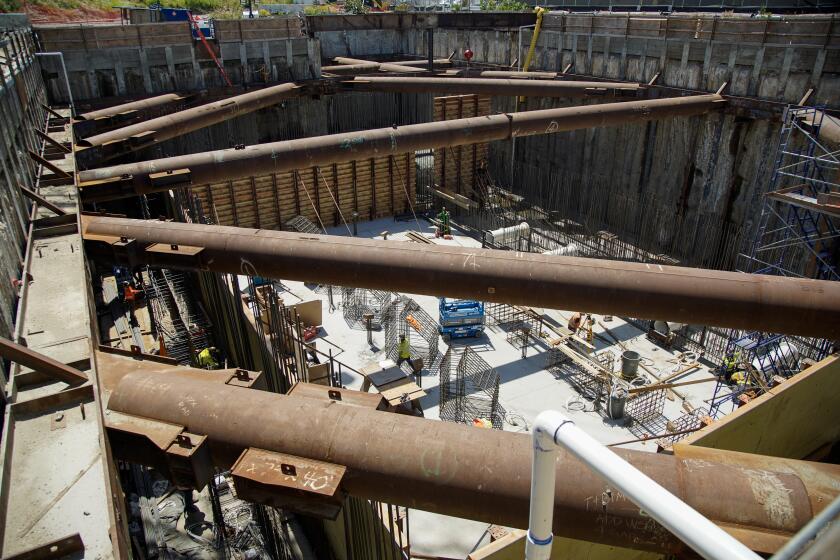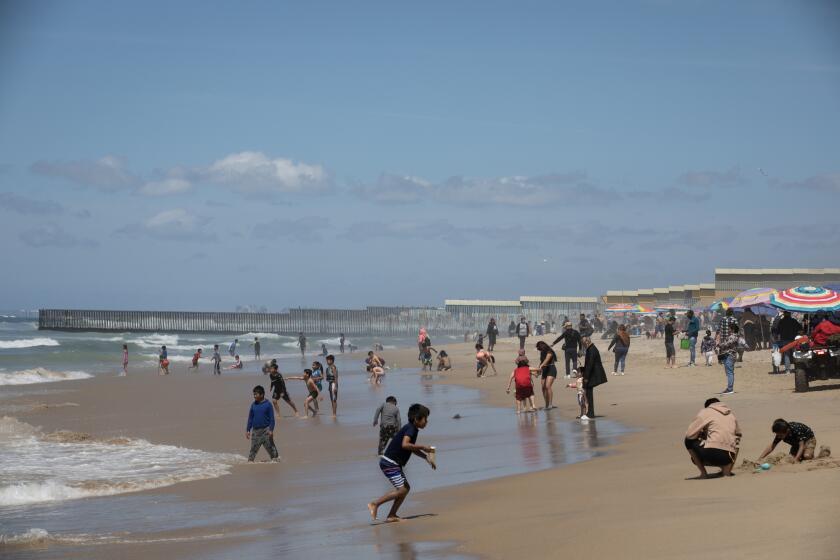Q&A: Supervisor Nathan Fletcher explains why San Diegans need to drive less

Newly sworn-in San Diego County Supervisor Nathan Fletcher has quickly positioned himself to be a major player on one of the state’s most contentious issues — how much people drive.
The 42-year-old former Republican state assemblyman switched teams several years ago. Today, he’s unequivocally liberal, calling for tougher action on reining in greenhouse gases, such as installing more bike lanes, even at the expense of parking spaces and making massive investments in public transit.
Seemingly overnight he has the political platform to try to make his vision a reality. In his capacity of supervisor, he’s sits on the San Diego Metropolitan Transit System’s Board of Directors, the San Diego Association of Government’s Transportation Committee and the governing board for the San Diego County Air Pollution Control District.
Most notably, he was appointed by Gov. Gavin Newsom several weeks ago to serve on the powerful California Air Resources Board. The agency is the top air-quality cop in the state, overseeing everything from the cap-and-trade program to emissions limits on freight equipment to caps on greenhouse gases from commuter cars.
It’s a position that was also held by the county supervisor he replaced, Ron Roberts. But unlike his predecessor, Fletcher has vowed to take a tough stance on an issue that has vexed California, how to get people out of their cars and onto alternative cleaner modes of transportation.
The following is an edited conversation between The San Diego Union-Tribune and Fletcher on Tuesday, Feb. 19 at his new office at the County Administration Center in downtown San Diego.
Q: What are your top priorities? What are the issues you’re looking at right now?
A: When you look at San Diego, we’re at this inflection point. We’ve kind of been this sleepy beach town where our highest priority has been getting conventions and being a vacation destination with a more rural mindset, more conservative past. I think we have a more progressive future, and I think we have a more urban future.
Approach to environmental issues has got to be one of the cornerstones of a fundamental rethink of what we’re doing here.
But yet you still have SANDAG board members saying, ‘We still just need to increase freeway capacity.’ No. No. If we don’t fundamentally rethink everything we’re doing in terms of what is the foundation for a sustainable environment for the next 50 to 100 years, we’re going to do a huge disservice to our kids and grand kids and everyone who comes behind us.
San Diego region way off track to meet state mandates for limiting climate pollution from driving »
It’s not just SANDAG, the Port (of San Diego) acknowledged that it missed out on funding because it didn’t have a plan. The county continues to struggle with the reality that you actually need to be committed to reductions in greenhouse gas emissions.
Q: Your predecessor Ron Roberts would suggest at air board meetings that electric vehicles will solve many of these problems and that we should stop trying to force people out of their cars. What’s your thoughts about that?
A: Well, he’s not here anymore. Now we have a new approach. I do worry about the driving.
I get it all the time. People say, ‘So what you’re saying is you want less funding for roads and more funding for transit.’
Yes. That’s exactly what I’m saying.
There’s a limited supply of money. I want more money for transit. I want more money for bike lanes. Does that mean less parking? That does. That does mean less parking spots.
They say ‘We just need to widen the freeways to get less congestion.’ No, you need to get cars off the freeway so you can get less congestion.
California speeding toward fight over driving limits in age of climate change and electric cars »
How do you get cars off the freeway? You realign your approach to land use and where you put housing, commercial, bike lanes, where you put sidewalks, and you fundamentally rethink a more urban approach.
What is the outcome? Well, I think the younger generation gets a lifestyle that they actually want. They don’t want to live in suburban Scripps Ranch and go to Applebee’s and drive 58 minutes to get to work.
Q: What about bringing in funding through the air board? Do you think San Diego’s getting its fair share of, for example, cap-and-trade funding?
A: No. San Diego, in my opinion, has not maximized its potential to get funding. And I think our Air Pollution Control District can do more. I think we can push for more cap-and-trade funding via the Legislature. I think we can push for more (air board) funding, more Energy Commission funding, Transportation Commission money.
Q: OK, so specifically how do we bring in that money?
A: It requires us to really show how we’re going to get there, and I think in a lot of ways we’re still wrestling with how do we embrace what a lot of see as the future.
That’s a lot of what we’re working on now. We’re looking at pots of money around youth bus passes. That’s kind of a minor thing, but it gets more folks in transit.
Particularly as it relates to (air quality), monitoring’s good, but we’ve got volumes of American Lung Association data and (air board) data that says that air’s really bad. But I want to put an air monitor on every elementary school in San Diego, and I want to disclose the data in real time. If you did that, almost every parent would go look it up.
Historic effort launched to clean up toxic air pollution in San Diego’s portside communities »
I remember on the campaign, people would say, ‘I’m not a Sacramento insider like Nathan Fletcher.’ I’m like, I totally am.
I’m friends with Gavin. I talk to him regularly. My wife (Assemblywoman Lorena Gonzalez, D-San Diego) is chair of the Appropriations Committee. Three quarters of the Senate I served with when I was in the Assembly.
We haven’t had anyone on the Board of Supervisors who had those relationships. Viewing Sacramento as a resources for what we want to do, as opposed to just complaining about it all the time, is a fundamental shift in mindset.
Q: Have you thought at all about congestion pricing or per-mile highway charges? Recently SANDAG Executive Director Hasan Ikhrata told The San Diego Union-Tribune Editorial Board that he’s an advocate for it at some stage in the planning process.
He says once we get a transit system in place that can compete with driving, we should look at possibly a per-mile charge. Also, he says, eventually if everything goes electric you’re going to need to do it anyway to make up for lost revenue from gas tax.
A: I’m open to it. My concern with it is similar to gas taxes in that it becomes so regressive. It really hammers the poor disproportionately hard.
They live further away and what they can pay per mile versus what someone affluent can pay. It’s not like income tax, which has a graduated scale.
I like creative ideas, like I thought it would be interesting to look at a tire tax. If you did it as a percentage of the cost of the tire and you had a 2,000-pound Expedition, your tires would be really expensive. And then there’s an actual tie to how much you drive.
But the idea that we want to get the incentives in the right place is, I think, 100 percent right.
There’s this historic sense that in San Diego we set low expectation and then cut them in half. That’s a part of what has to change. We need a generation of really bold thinking.
Twitter: @jemersmith
Phone: (619) 293-2234
Get Essential San Diego, weekday mornings
Get top headlines from the Union-Tribune in your inbox weekday mornings, including top news, local, sports, business, entertainment and opinion.
You may occasionally receive promotional content from the San Diego Union-Tribune.

